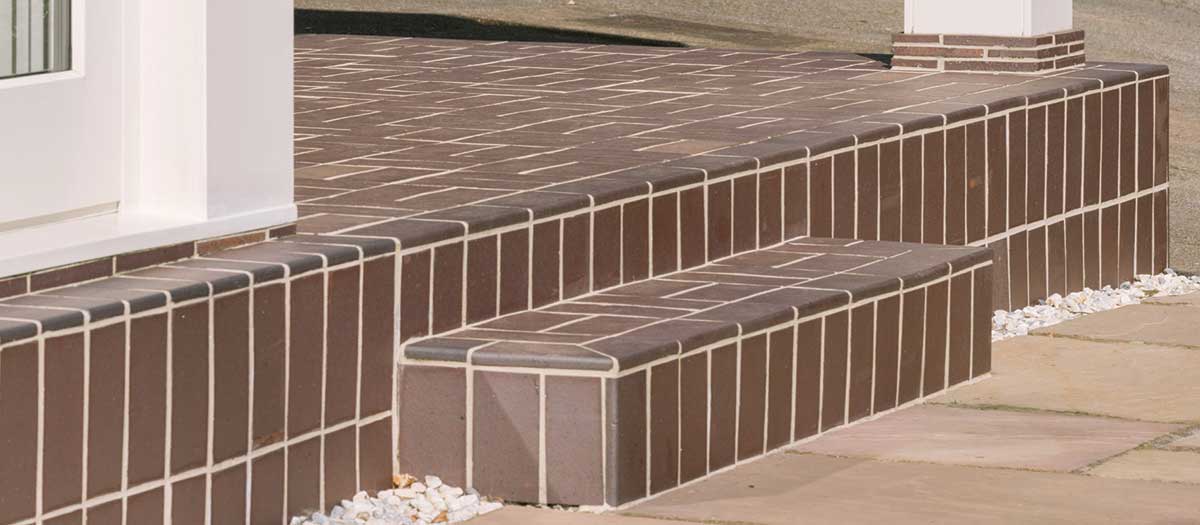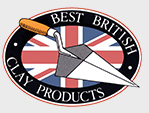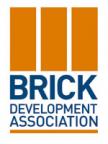Laying, cleaning and maintenance of clay quarry tiles

Background and Applications
Ketley Bricks are manufactured in a high quality factory in the West Midlands UK which has been operating for 210 years. During this time the company has built up an extensive knowledge of the tile manufacturing process. Ketley Quarry Tiles are manufactured from the proven Etruria Marl clay, which when fired becomes dense, hard wearing and resistant to acids, alkalis, oils, grease and fats. It is the same clay that has stood the test of many decades in the form of Ketley Class A engineering bricks and Dreadnought Roof tiles, still seen in excellent condition in railway bridges, canal locks and roofs across the UK.
The Ketley range of quarry tiles suit most flooring and wall cladding applications indoors or externally, in commercial premises or the home. They are available in a range of natural clay colours from Staffordshire Red, Brown Brindle, Blue Brindle, Brown Antique and Staffordshire Blue. Quarry tiles and brick slips are 18mm thick and demonstrate exceedingly low slip potential in pendulum tests on sliders 96 & 55 and in inclined platform tests in shod conditions, they can be categorised as R11 which means they are not considered to be slippery in wet or greasy conditions, and in inclined platform tests in barefoot conditions, they can be categorised as Category C which is the highest rating for slip resistance. They are ideal for heavily pedestrianised traffic areas, such as external terraces, where continuity from indoors to outdoor paving is desired, light industrial and internally in retail, commercial outlets and the home. Sealers are not necessary but can be used indoors in certain situations.
Laying
During the floor laying operation the areas being treated should be accessible to no-one but the floor layers and should not be subjected to traffic until the bedding has stiffened and sufficient bond has developed between the bedding and the tile. The floor should be kept clean and free from cement and plaster droppings. As a general guide the following fixing should be followed;
1. A joint width of between 6 & 10 mm.
2. A bedding layer to be approximately 6mm for cement based adhesives, 15-25mm for cement mortar and up to 70mm for a semi dry bed.
3. A screed would normally be applied with a thickness of 50mm.
4. A separating layer may be used to isolate the slips or paving tiles and their bedding from the base, preventing stresses in the base affecting the floor finish. This method is not recommended for exterior applications.
When a screed is applied, the concrete base must be at least 4 weeks old. The screed must then be allowed to mature for at least 2 weeks before fixing commences, during which time it must be protected from rain and frost.
Bedding directly to the base can be used where the base is completely matured and where there is no risk of further shrinkage movement or where a damp-proof membrane is incorporated between the concrete base and screed. This method is suitable for external applications.
Care should be taken to incorporate appropriate falls and movement/expansion joints within the design of structure.
A suitable damp-proof membrane should be incorporated in the construction.
Quarry tiles should only be laid on a rigid bed with no voids underneath so the load applied to them is transferred through to the base. In situations where heavy loads are involved the strength of the installation can be improved by the use of a thicker paver as the transverse breaking load of a clay paving product is directly related to its thickness where all other factors are equal. It is advisable to select the material to resist the most arduous conditions likely to be imposed during the life of the product.
Grouting
Grouting of quarry tiles can be carried out with wet cement-sand mortars or adhesives. Grouting should not be carried out for 12 hours after laying the quarry tiles except in situations where a semi-dry mix method is used, where tiles should be grouted within 4 hours of laying to ensure a full bond between the grout and the bedding. Board should be laid over the tiled area to spread the load of the tiler when carrying out the grouting operation.
The grouting mortar should be adapted for the width of the joint with a lower ratio of cement for wider joints. A mixture of 1:1 cement to fine dry sand by volume mixed to a paste with only the minimum of water for workability, should be used for joints of less that 6mm and a ratio of 1:3 for joints wider than 6mm. Avoid too wet a mix, as this will dry out rapidly and the grouting will crack and break out. Work in the grout in small joints with a squeegee action. In wider joints pointing is recommended. After the joints have been filled, scatter a dry 1:3 or 4 mortar mix over the joints: allow to dry for about 5 to 10 minutes, then brush away excess loose material with a soft bristle brush. Finally clean off the tiles with water and a cloth, avoid excess watering of the tiles in this operation.
If an impervious joint is required, additives may be used in the grout mix or proprietary ready grouts can be used. However advice should be sought from the manufacturers as to their suitability for the application. Attention should be paid to cleaning any proprietary grout or grouts mixed with additives off the surface of the Quarry tiles immediately.
Tiles should be cleaned as work proceeds. Such cleaning should be minimal with good workmanship.
Post Fix Builders Clean
After laying, flooring installations can require some cleaning to remove cement and mortar residue from the quarry tiles. In this case, we would suggest the use of a product such as Lithofin KF Cement Residue Cleaner. This can also be used to remove other hardened dirt layers. Due care should be taken during cleaning to avoid contaminating other areas and the product’s health and safety measures should be strictly adhered to.
General Cleaning and Maintenance
The type, degree and frequency of cleaning will depend on the activities and processes being carried out in the area, together with the amount and type of trafficking. Under normal domestic circumstances Quarry Tiles require little maintenance and can be kept clean by sweeping then washing with warm water to which a suitable non-soapy neutral, sulphate-free detergent has been added but only once the joints are hard. They should then be cleaned off using clean water. Strong detergents should not be used as they can cause scumming. Always damp tiles before applying a cleaning agent to avoid the cleaner being drawn into the body of the tile: the cleaning treatment is then restricted to the surface of the tile. Periodic Intensive Cleaning Clean and dry quarry tiles possess a low slip potential but slip accidents can occur in the presence of contamination between the floor surface and foot. The likelihood of a slip occurring is greatly reduced if contamination is controlled by means of a regular cleaning and maintenance procedure. For a cleaning and/or maintenance regime to be effective there are a number of basic elements that should be considered:
• Before establishing a floor cleaning protocol, the specific contaminants must be identified in order to enable the selection of the appropriate cleaning agent
• The cleaning tools provided should be appropriate for use with the floor in question – it may be necessary to assign dedicated tools for specific areas
• Regular cleaning of the floor should be scheduled, specifying the responsible person and time of day or night (dependent on likely volume of pedestrian traffic) cleaning should take place
• Clear instruction should be provided as to the cleaning requirements and procedures, correct use and disposal of detergents, emergency conditions and procedures and recording and reporting of maintenance operations
• Wear, damage, debris and contaminants should be identified through routine inspection of floor surfaces.
Contamination cleansing routines for quarry tiles are dependent upon a number of factors, the contamination present, the availability of chemical cleaning agents and the practicality of manoeuvring cleaning machinery in the given space. Beyond the method used, it is imperative to ensure all contaminates are removed following the cleansing process. The freshly cleaned floor must be thoroughly rinsed with clean water to make certain that all cleaning agents are removed and the floor is dry on completion. Failure to conduct these last actions can lead to a build-up of concentrated contaminate and cleaning agent on the surface of floors. These contaminant and cleaning agent residues will combine with any water subsequently applied to form an emulsion that can spread over the floor’s surface, significantly increasing the slip potential.
Difficult stains can be removed in one of three ways;
• By the use of an abrasive soap. Steel wool should not be used as small particles may be deposited in the grouting causing rust marks
• By chemical means, by reaction with the appropriate solvent but due to the variety of materials that may cause staining it is recommended that advice is sought from the manufacturer of the cleaning agent
• By bleaching to remove the colour from the stain, although this should not be done on a regular basis.
Use of Sealants
Sealing of Ketley Quarry Tiles is not necessary. However, in certain situations such as around a lavatory or shower, where limescale can build up, a sealer can help with cleaning regimes. For more information on suitable sealants, take a look at the Lithofin range of products https://casdron.co.uk Any such treatments applied would detract from the natural slip-resistant properties of the tiles and also provide a medium that would attract and retain dirt and other contaminants.
Disclaimer The information and recommendations given here are provided as guidelines to good practice. However, since conditions of use and workmanship are beyond the control of the company, its agents and consultants, the information and advice are given without acceptance of any responsibility by the company, its agents or consultants in any way whatsoever.









